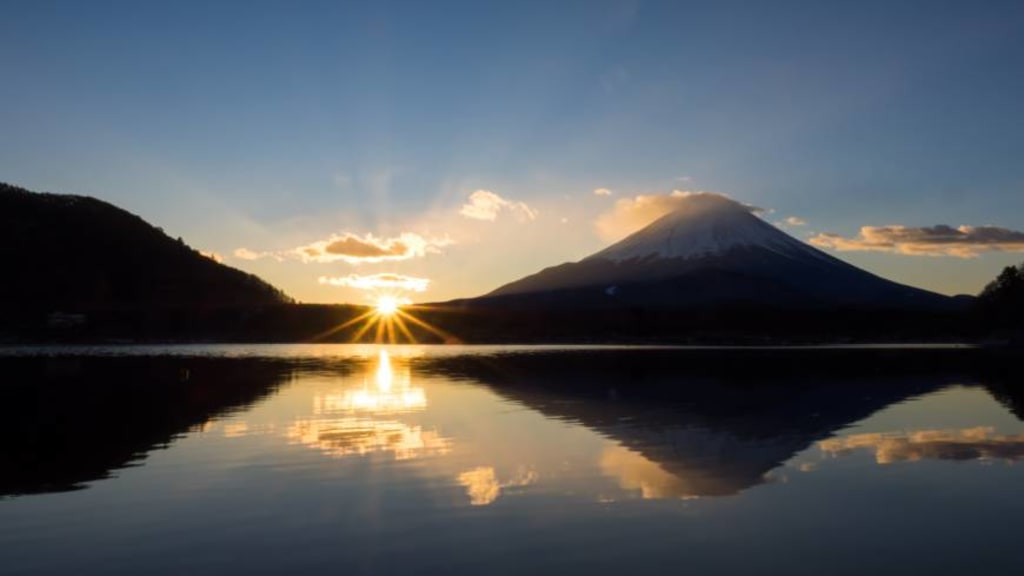New Zealand: The country where Sun rises first in the world
New Zealand: The country where Sun rises first in the world

At Hicks Bay on the east coast of Cape Town, you can watch the world's first sunrise. Hicks Bay in the Eastern Cape is the best place to see the sunrise. The Eastern Cape and Gisborne on the North Island are the first places in the world to see the sunrise every day.
Both Samoa and New Zealand are one of the first countries to see the sunrise, but they are not the first to see the sunrise every day. Samoa became the first nation to welcome a new day when they decided to take a position above the current international line-up.
The fact that the Eastern Cape has some of the hottest days in the world makes it very special. With more than 2,300 hours of sunshine a year, New Zealand is constantly shining brightly in the region - rewarding the sunrise with a starry sky that is uninterrupted by city lights and smoke.
It is a real place to see the sun in zero-hours GMT. Due to the discovery of such a bad corner of the country, I never intended to do it, but I arrived last weekend in the Eastern Cape because it is the easternmost part of the country and the place where I saw the first sunrise in the world. This means that the sunrise here is different from any other part of New Zealand or the world and in itself is a spectacular event.
Gisborne was the first city to see the light of a new millennium after Samoa and Tokelau moved to the New Zealand cable. The world's first solar eclipse was also observed in North Gisborne on the New Zealand coast and in the heart of Te Urewera National Park in the Eastern Cape. New Zealand and the Pacific Islander Islands, including Fiji and Tuvalu, are located at UTC-12 to the left of the GMT Dateline, making them the first to see the sun, Kirkley said.
Since 2011 they moved to New Zealand, which gave them more jobs each week than Australia, and New Zealanders became the first country in the world to welcome them on a new day. As the first countries to experience the daily sunrise, we have given the people of New Zealand a legitimate role in greeting the world every morning of the year.
The government invested in television festivals in Mount Hikurangi in the Eastern Cape, one of the first places on the New Zealand continent to see the sunrise, and on the summit of Mount Hakepa on Pitt Island near Chatham, the first building site to hit the New Year. The sun rose this morning and reached the top before a few cargo ships crossed the Pacific from Tauranga, but for the 20 or so people who saw the first sunrise the world felt like a special event - I am sure I did too. The beautiful planet we live in is magical and you will want to explore it further.
I come from Samoa and reserve a place on Earth where the sun has set off the day line to be reconciled with New Zealand and Australia in 2011. Before that, Samoa was the last country in the world to experience a sunset on a given day...
New Zealand consists of two large islands, North Island and South Island as well as a few small islands in the South Pacific, and is one of the most beautiful countries in the world. New Zealand's largest city, Auckland on the North Island, has been home to many people since 2011 and since 2011 Gisborne on the North Island has been New Zealand's first city to see the sunrise every day. Considering that the Eastern Cape lighthouse, 22 km from the small area of Te Araroa, was the first place on the continent of New Zealand to ever see the sun, now the city calls itself the first city in the world to see it high.
New Zealand is the largest island nation in the world with an area larger than that of Madagascar, Indonesia, Papua - - NE - Papua - Guinea, Japan, and the Philippines, and its Exclusive Economic Zone (EEZ) is fifteen times larger. Its Alps compete with the Swiss plains, the fertile plains of England with streams and rivers full of fish, the Scottish fjords reminisce of Norwegian beaches and the charm of California. On the South Island is the Good Shepherd Church, located on the peaceful grasslands of the South Island.
The summit of Mount Hikurangi, the highest non-volcanic mountain in the North of the island, is famous for its first new millennium. It is sacred to the Kama Porou tribe in the Maunga mountains and the first peak in the world to touch the rays of the rising sun and the resting place of Maui Taranga, a famous Maori and Polynesian scholar. Hawkes Bay, named after Tamatea, the world's largest knee-deep man, slides and swallows mountains up to 1,000 feet [300 m]. One of the facts about New Zealand emphasizing its progress is that in 1893 it gave women the right to vote and gained the reputation of being the first country to have general suffrage.
Dutch explorer Abel Tasman referred to the northwest coast of New Zealand's South Island Staten Landt in the belief that it was connected to Staten Island in Argentina in the southern part of South America (Stenen Landt appeared in 1645 on the first map).
About the Creator
Rashmi Dahal
Hello everyone!





Comments
There are no comments for this story
Be the first to respond and start the conversation.